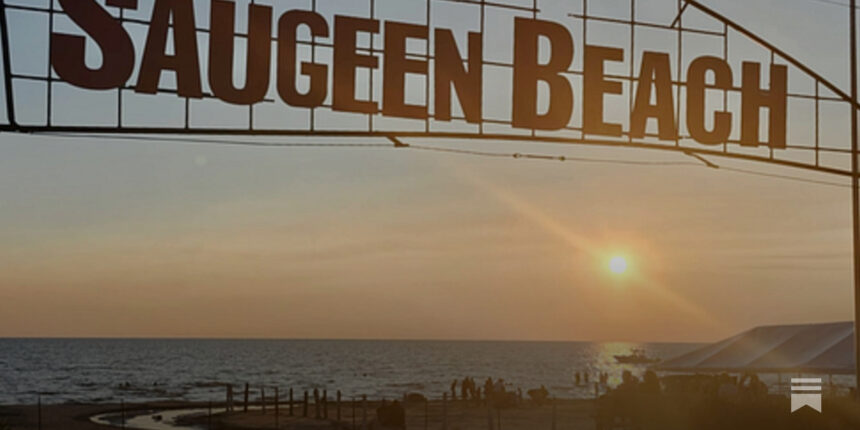The small changes often reveal our largest values. This summer, visitors to Sauble Beach will notice something different about the iconic welcome sign that has greeted beachgoers for generations. The word “Welcome” now appears not only in English and French but also in Anishinaabemowin, the language of the Saugeen Ojibway Nation who have called this shoreline home since time immemorial.
Some might dismiss this addition as merely symbolic—a token gesture amid larger conversations about reconciliation. They couldn’t be more wrong. In the delicate dance of cultural recognition, these symbols carry profound weight, particularly when they acknowledge the original stewards of the land we all now share.
The shores of Lake Huron have witnessed centuries of history unfold—from the traditional fishing practices of Indigenous peoples to the arrival of European settlers, through to today’s bustling tourism economy. Yet throughout these transitions, the connection between the Saugeen Ojibway Nation and these waters has remained unbroken, if too often unacknowledged.
As our society grapples with the complex legacy of colonization, these small acknowledgments serve as vital reminders that reconciliation happens not just in courtrooms and legislatures, but in everyday spaces. When children see multiple languages on a beach sign, they absorb a subtle but powerful message: this land has layers of history, and many voices deserve to be heard.
The timing couldn’t be more appropriate. Across Canada, communities are reconsidering how public spaces reflect—or fail to reflect—Indigenous presence. From the renaming of streets to the removal of controversial monuments, we are witnessing a collective recalibration of how history is represented in shared spaces.
What makes the Sauble Beach sign particularly meaningful is its location at the intersection of leisure and heritage. Beaches aren’t just recreational spaces; they’re cultural touchpoints where memories are made and traditions passed down. By incorporating Anishinaabemowin into this beloved landmark, the sign acknowledges that these shores have been a gathering place for far longer than most visitors might realize.
Critics might argue that true reconciliation requires more substantial action than updating signage. They’re right, of course—but they miss an essential truth: meaningful change often begins with symbolic gestures that shift our collective consciousness. The sign represents not an endpoint but a beginning—a visible commitment to a more inclusive understanding of place.
For tourists who flock to Sauble Beach each summer, the trilingual welcome offers a gentle education, an invitation to consider whose footsteps preceded theirs on the sand. For Indigenous visitors, particularly youth, seeing their ancestral language displayed prominently affirms their rightful place in both history and present day.
The power of language to shape perception cannot be overstated. Languages carry within them entire worldviews, ways of understanding relationships between people, land, and time. By giving Anishinaabemowin equal prominence alongside Canada’s official languages, the sign acknowledges that there are multiple valid ways of seeing and being in this shared space.
As communities across Canada navigate the complex currents of reconciliation, Sauble Beach’s sign update offers a blueprint for how small changes can honor big truths. It demonstrates that recognizing Indigenous presence doesn’t diminish anyone else’s connection to beloved places—it enriches everyone’s understanding of them.
The next time you visit Sauble Beach, take a moment to pause before that sign. Consider the hands that have touched these shores over centuries, the many languages that have described its beauty. In that moment of reflection lies the true power of this seemingly simple change: the recognition that reconciliation isn’t some distant political process but something we can participate in every day, with every step we take on shared ground.










